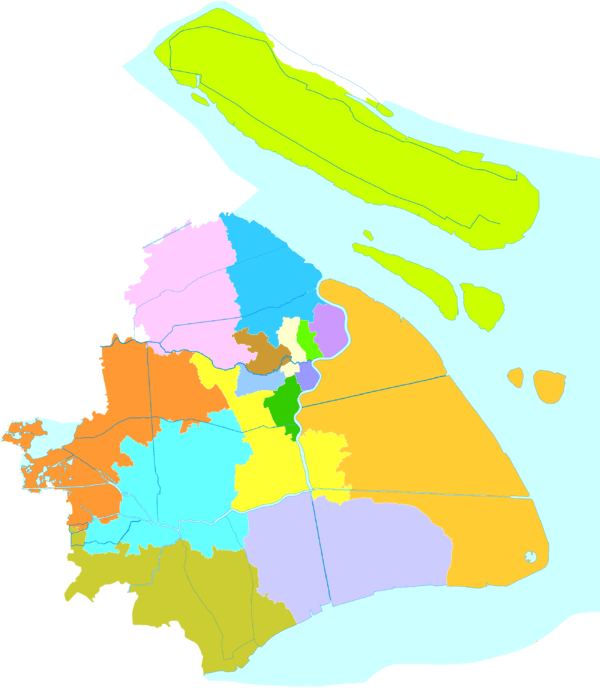Wusong
Wusong, formerly romanized as Woosung,[n 1] is a subdistrict of Baoshan in northern Shanghai. Prior to the city's expansion, it was a separate port town located 14 miles (23 km) down the Huangpu River from Shanghai's urban core.
| Wusong 吴淞区 | |||||||||
|---|---|---|---|---|---|---|---|---|---|
| Subdistrict of China | |||||||||
| 1980–1988 | |||||||||
 Location of Wusong on Shanghai. | |||||||||
| History | |||||||||
• Established | 1980 | ||||||||
• Disestablished | 1988 | ||||||||
| |||||||||
| Today part of | Part of the Baoshan District, Shanghai | ||||||||
| Wusong | |||||||||
|---|---|---|---|---|---|---|---|---|---|
| Traditional Chinese | 吳淞 | ||||||||
| Simplified Chinese | 吴淞 | ||||||||
| Postal | Woosung | ||||||||
| |||||||||
Name
Wusong is named for the Wusong River, a former name for Shanghai's Suzhou Creek. Suzhou Creek is now a tributary to the Huangpu River, emptying into it in Puxi across from Lujiazui and just north of the Bund. The Huangpu had previously been a tributary to the Wusong, but the two reversed their importance when a flood caused it to gain a number of the Wusong's former tributaries.
History
Wusong housed a Qing fortress protecting the entrance to Shanghai.[1] It was captured by the British during the Battle of Woosung on 16 June 1842, amid the First Opium War. During the steamship era, it was the point of departure for large steamers bound for Shanghai.[1] This position caused it to be the site of China's first telegraph wires and first railroad, both running to Shanghai along what is today the route of the Shanghai Metro's elevated Line 3. By 1900, it boasted a lighthouse and a "skeleton" teahouse, as well as a small squadron of war-junks (ty-mung) of the Imperial Chinese Navy.[1]
Tongji University was founded here in 1909. During World War II, this town was the site of an internment camp for marines captured on Wake Island. Wusong became a district of Shanghai, before it was abolished in 1988 and incorporated into Baoshan District.[2]
Notes
- Variant spellings include Woo-Sung.[1]
References
Citations
- Sladen (1895), p. 278.
- "上海地名志 总述" (in Chinese). Office of Shanghai Chronicles. 3 August 2004. Retrieved 3 October 2019.
Sources
- Sladen, Douglas (1895), "Bits of China", The Japs at Home (5th ed.), New York, NY: New Amsterdam Book Co., pp. 276–354.
See also
- Woosung Road
- Wenzaobang, also known as Wusong Creek
- Suzhou Creek, formerly known as the Wusong River

